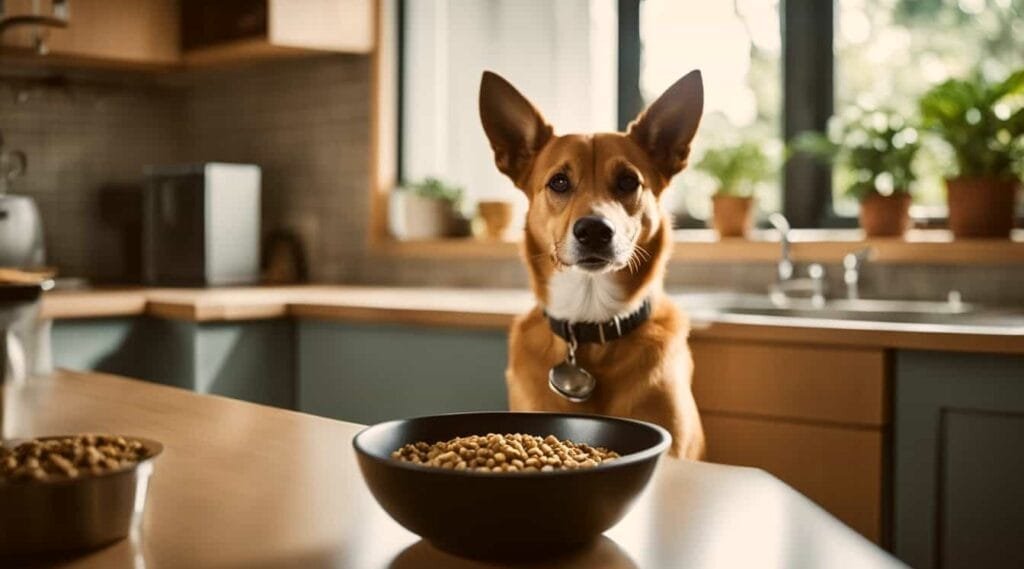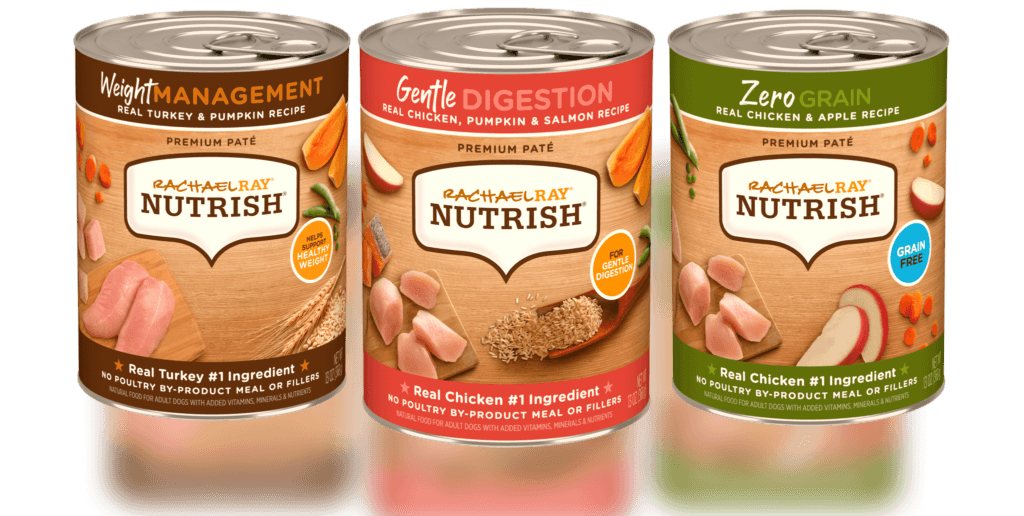Choosing the best food for your dog is important because it keeps them healthy, strong, and happy. Just like people, dogs need the right mix of nutrients in their diet to stay in good shape. Good dog food has the right amount of protein, healthy fats, vitamins, and minerals to help them grow strong muscles, shiny coats, and stay active. But with so many types of dog food available—like dry kibble, wet food, and grain-free—it can be tricky to know which one is best for your furry friend.
In this guide, we’ll cover everything you need to know about finding the perfect dog food. We’ll explain the different types of dog food, the top nutrients to look for, and even give some tips on reading dog food labels. Whether you have a playful puppy, an adult dog, or a senior pet, you’ll learn how to choose the best food for their age and size. By the end, you’ll know exactly how to pick food that will keep your dog happy and healthy.
What Makes Good Dog Food?
Good food has the right mix of nutrients. Nutrients are the things in food that help keep us healthy, and dogs need them too.

- Protein is one of the most important nutrients. It helps build strong muscles.
- Fats give your dog energy and make their food taste good.
- Carbohydrates are another energy source that can help your dog stay active.
- Vitamins and minerals keep your dog’s body working properly, like supporting a healthy coat and strong bones.
The best foods use real ingredients, like real meat (chicken, beef, or fish), veggies, and natural grains. Foods with lots of fillers (like corn or wheat) or artificial flavors are not as healthy for dogs and should be avoided if possible.
Types of Dog Food
There are a few main types of dog food, and each one has its own pros and cons. Here’s a breakdown:
Dry Dog Food (Kibble)
- Benefits: Dry food, or kibble, is easy to store and often the most affordable option. It can also help clean your dog’s teeth because it’s crunchy.
- Drawbacks: Kibble can be a little dry, so it’s not the best choice for dogs who don’t drink enough water.
Wet Dog Food (Canned Food)
- Benefits: Wet food has a lot of water in it, which helps dogs stay hydrated. It’s also very tasty, so it’s good for picky eaters.
- Drawbacks: Wet food can be messy and doesn’t last as long once opened. It’s also usually more expensive.
Raw Food
- Benefits: Raw dog food is often closer to a dog’s natural diet. It includes fresh meat, fruits, and veggies and has no fillers or preservatives.
- Drawbacks: Raw food needs to be stored carefully to avoid spoiling. It can also be more expensive and take more time to prepare.
Grain-Free Food
- Benefits: Some dogs have allergies to grains, and grain-free food can help. Grain-free foods use things like sweet potatoes or peas instead of grains.
- Drawbacks: Not all dogs need grain-free food, and it’s usually more expensive. Talk to your vet to see if grain-free is right for your dog.

Best Dog Foods for Different Needs
Dogs come in all shapes, sizes, and ages, and different foods are best for different dogs.
Best for Puppies
Puppies need food that is high in protein and calories to help them grow. Look for food labeled “for puppies” to make sure it has the right balance.
Best for Adult Dogs
Adult dogs need food with balanced nutrients to keep them healthy and energetic. Look for food labeled for “adult maintenance.”
Best for Senior Dogs
Older dogs need food that is easy to digest and has extra nutrients to support their joints and bones. Senior food often includes added vitamins and minerals.
Best for Small Breeds
Small dogs need smaller kibble and more calories in each bite to keep up with their energy. Look for food specifically made for small breeds.
Best for Large Breeds
Large breeds need food that supports their joints and prevents too much weight gain. Look for food with added joint support.
How to Read Dog Food Labels
Reading a food label can help you understand what’s really inside. Here are some tips:
- Look for Real Ingredients: Ingredients like “real chicken” or “beef” are better than something like “meat meal.”
- Avoid Fillers: If you see a lot of corn, wheat, or soy listed first, that food may not be the best choice. Dogs need more meat-based ingredients.
- Avoid Artificial Additives: Some foods use fake flavors and colors to make them look or taste better, but these aren’t healthy for dogs. Look for labels that say “no artificial flavors or preservatives.”
Top Recommended Dog Food Brands
Here are some popular food brands that many pet owners love. Remember, it’s always best to check with your vet to find the right food for your dog.
- Blue Buffalo – Known for using real meat and no artificial additives.
- Hill’s Science Diet – Often recommended by vets for specific health needs.
- Royal Canin – Tailored to different breeds and sizes of dogs.
- Wellness Core – Grain-free and high in protein, good for active dogs.
- Purina Pro Plan – A balanced and budget-friendly option with quality ingredients.
DIY Dog Food: Is It Safe?
Some pet owners like to make their own food. This can be great because you know exactly what your dog is eating, but it’s not as simple as it sounds. Dogs need a balanced diet, and it can be hard to get all the nutrients they need in homemade food. If you’re interested, check with your vet to make sure your homemade food has the right ingredients.
Feeding Tips for Your Dog
- Portion Control: Don’t overfeed! Check the serving size on the food package or ask your vet for advice.
- Feeding Schedule: Most dogs do well with two meals a day, but some may need more.
- Signs of Food Issues: If your dog seems itchy, tired, or has an upset stomach, the food might not be right for them. Talk to your vet about switching foods if you notice problems.
Conclusion: Finding the Right Food for Your Dog
Choosing the best dog food can take some time, but it’s worth it. The right food helps your dog stay healthy, active, and happy. Whether you choose dry kibble, wet food, or even raw, make sure it has quality ingredients that meet your dog’s needs. Remember, each dog is unique, so what works for one may not work for another. When in doubt, ask your vet for help finding the perfect meal plan for your furry friend.
FAQs about Dog Food
- What’s the healthiest dog food?
- The healthiest food has real meat, vegetables, and no fillers like corn or wheat.
- Can I feed my dog human food?
- Some human foods, like plain chicken or carrots, are safe, but others, like chocolate, are dangerous.
- How do I know if my dog is allergic to their food?
- Common signs are itchy skin, ear infections, and upset stomach.
- Is grain-free dog food better?
- Some dogs need it for allergies, but it’s not better for all dogs.
- How much should I feed my dog?
- This depends on their size, age, and activity level. Your vet can help you decide.
- Can I mix wet and dry food?
- Yes! Mixing can make meals more interesting for your dog.
- Why is protein important in dog food?
- Protein helps dogs grow strong muscles and gives them energy.
- How often should I change my dog’s food?
- Change food only if your vet recommends it, and do it slowly to avoid an upset stomach.
- Are there foods I should never give my dog?
- Yes! Avoid chocolate, onions, grapes, and raisins—they’re harmful to dogs.
- Can dogs eat raw food safely?
- Some dogs do well on raw food, but talk to your vet first since it needs careful handling.







